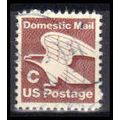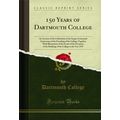Dunwich, Suffolk - Lychgate & War Memorial - Friths postcard c.1960s
- Condition : Used
- Dispatch : 2 Days
- Brand : None
- ID# : 180199115
- Quantity : 1 item
- Views : 135
- Location : United Kingdom

- Seller : justthebook (+1699)
- Barcode : None
- Start : Sat 27 Apr 2019 16:02:37 (EDT)
- Close : Run Until Sold
- Remain : Run Until Sold
Checks/Cheques
 for 1 item(s) edit
for 1 item(s) edit
Shipping Calculator
More Listings from This Seller view all
Seller's Description
- Postcard
- Picture / Image: Lychgate and [war] meorial, Dunwich, [Suffolk]
- Publisher: Friths (DNH 5)
- Postally used: no
- Stamp: n/a
- Postmark(s): n/a
- Sent to: n/a
- Notes / condition:
Please ask if you need any other information and I will do the best I can to answer.
Image may be low res for illustrative purposes - if you need a higher definition image then please contact me and I may be able to send one. No cards have been trimmed (unless stated).
------------------------------------------------
Postage & Packing:
Postage and packing charge should be showing for your location (contact if not sure).
No additional charges for more than one postcard. You can buy as many postcards from me as you like and you will just pay the fee above once. Please wait for combined invoice. (If buying postcards with other things such as books, please contact or wait for invoice before paying).
Payment Methods:
UK - PayPal, Cheque (from UK bank) or postal order
Outside UK: PayPal ONLY (unless otherwise stated) please. NO non-UK currency checks or money orders (sorry).
NOTE: All postcards are sent in brand new stiffened envelopes which I have bought for the task. These are specially made to protect postcards and you may be able to re-use them. In addition there are other costs to sending so the above charge is not just for the stamp!
I will give a full refund if you are not fully satisfied with the postcard.
----------------------------------------------
Text from the free encyclopedia WIKIPEDIA may appear below to give a little background information (internal links may not work) :
*************
Dunwich /ˈdʌnᵻtʃ/ is a village and civil parish in Suffolk, England. It is located in the Suffolk Coast and Heaths AONB around 92 miles (148 km) north-east of London, 9 miles (14 km) south of Southwold and 7 miles (11 km) north of Leiston, on the North Sea coast.
In the Anglo-Saxon period, Dunwich was the capital of Kingdom of the East Angles but the harbour and most of the town have since disappeared due to coastal erosion. At its height it was an international port similar in size to 14th-century London.[1] Its decline began in 1286 when a storm surge hit the East Anglian coast[2] followed by a great storm in 1287 and another great storm also in 1287, and it was eventually reduced in size to the village it is today. Dunwich is possibly connected with the lost Anglo-Saxon placename Dommoc.
The population of the civil parish at the 2001 census was 84,[3] which increased to 183 according to the 2011 Census,[4] however the area used by the Office of National Statistics for 2011 also includes part of the civil parish of Westleton. There is no parish council, instead there is a parish meeting.[5]
Since the 15th century, Dunwich has frequently been identified with Dommoc – the original seat of the Anglo-Saxon bishops of the Kingdom of East Anglia established by Sigeberht of East Anglia for Saint Felix in c. 629–31.[6] Dommoc was the seat of the bishops of Dommoc until around 870, when the East Anglian kingdom was taken over by the initially pagan Danes. Years later, antiquarians would even describe Dunwich as being the "former capital of East Anglia".[7] However, many historians now prefer to locate Dummoc at Walton Castle, which was the site of a Saxon shore fort.[8]
The Domesday Book of 1086 describes it as possessing three churches.[9] At this time it had an estimated population of 3000.[10]
On 1 January 1286,[11] a storm surge reached the east edge of the town and destroyed buildings in it. Before that, most recorded damage to Dunwich was loss of land and damage to the harbour.[12]
This was followed by two further surges the next year, the South England flood of February 1287 and St. Lucia's flood in December. A fierce storm in 1328[11] also swept away the entire village of Newton, a few miles up the coast.[citation needed] Another large storm in 1347 swept some 400 houses into the sea.[citation needed] The Grote Mandrenke around 16 January 1362 finally destroyed much of the remainder of the town.[13]
Most of the buildings that were present in the 13th century have disappeared, including all eight churches, and Dunwich is now a small coastal "village", though retaining its status as a town.[citation needed] The remains of a 13th-century Franciscan priory (Greyfriars) and the leper hospital of St James can still be seen.[14] A popular local legend says that, at certain tides, church bells can still be heard from beneath the waves.[15]
The loss of "a busy port to ... 14th century storms that swept whole parishes into the sea"[16] is an urban myth. It appears[17] that the port developed as a sheltered harbour where the Dunwich River entered the North Sea. Coastal processes including storms caused the river to shift its exit 4 km north to Walberswick, at the River Blyth. The town of Dunwich lost its raison d'etre and was largely abandoned. Sea defences were not maintained, and coastal erosion progressively invaded the town.
As a legacy of its previous significance, the parliamentary constituency of Dunwich retained the right to send two members to Parliament until the Reform Act 1832 and was one of Britain's most notorious rotten boroughs.[18]
By the mid-19th century, the population had dwindled to 237 inhabitants and Dunwich was described as a "decayed and disfranchised borough".[19] A new church, St James, was built in 1832, after the last of the old churches, All Saints, which had been without a rector since 1755, was abandoned. All Saints' church fell into the sea between 1904 and 1919, the last major portion of the tower succumbing on 12 November 1919.[20] In 2005 historian Stuart Bacon stated that recent low tides had shown that shipbuilding had previously occurred in the town.[21]
- Postcard
Listing Information
| Listing Type | Gallery Listing |
| Listing ID# | 180199115 |
| Start Time | Sat 27 Apr 2019 16:02:37 (EDT) |
| Close Time | Run Until Sold |
| Starting Bid | Fixed Price (no bidding) |
| Item Condition | Used |
| Bids | 0 |
| Views | 135 |
| Dispatch Time | 2 Days |
| Quantity | 1 |
| Location | United Kingdom |
| Auto Extend | No |




















